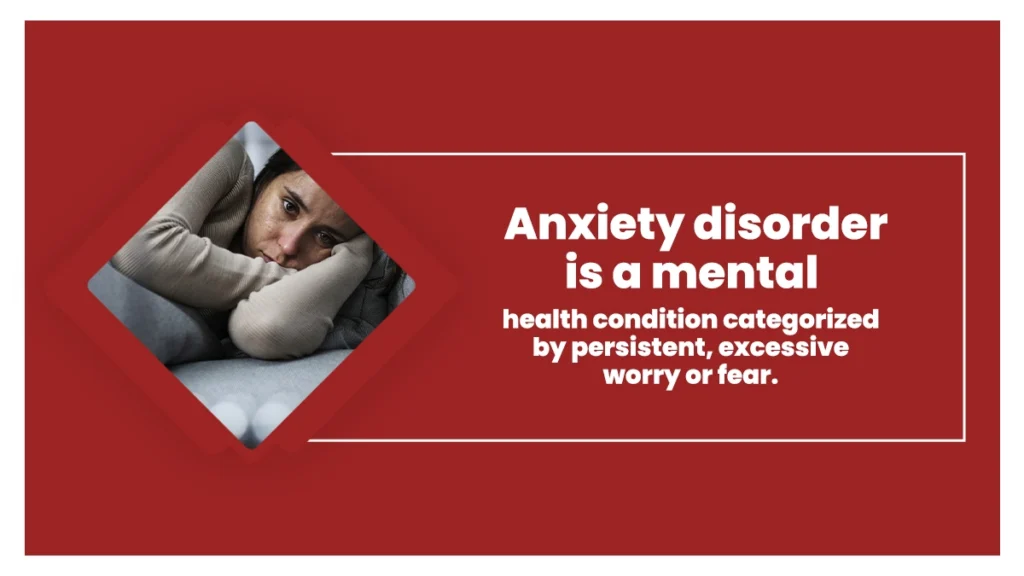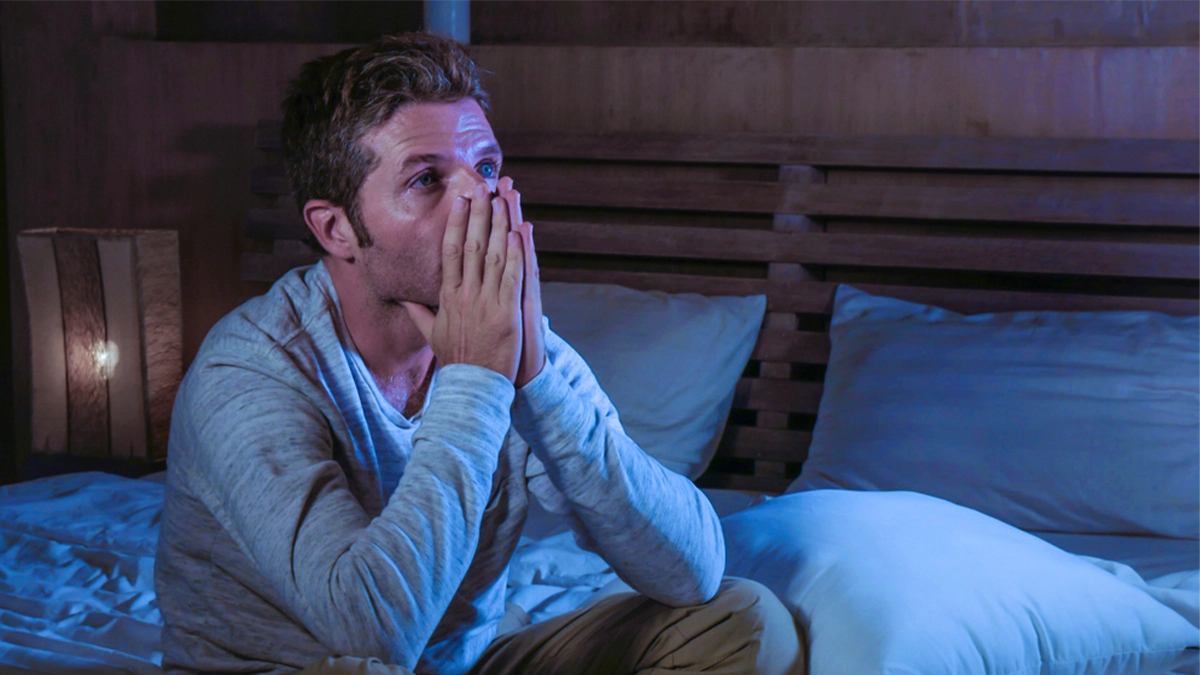Anxiety disorder is more than just feeling nervous before a big presentation or jittery in a crowd. It’s a complex mental health condition categorized by persistent, overwhelming worry, fear, and apprehension.
Whether you’re personally grappling with anxiety, know someone who is, or simply seek a deeper understanding of this common yet often misunderstood condition, join us on a journey toward insight, empathy, and effective coping strategies.
Key Takeaways
Understanding anxiety disorder is the first step towards seeking help and finding relief from its symptoms. Here’s what you need to know:
- Anxiety disorder is a mental health condition categorized by persistent, excessive worry or fear.
- It can affect daily life and manifest in physical symptoms like rapid heart rate and trembling.
- Seeking professional help and adopting coping strategies are crucial steps in managing anxiety disorder.
Contact Indiana Center for Recovery at (844) 650-0064 to learn more about our programming.

Anxiety
Anxiety is a natural reaction to stress, often trademarked by feelings of fear or apprehension about what’s to come. Feeling anxious before a big event or during times of uncertainty is normal. However, when anxiety becomes extreme or persistent, it can interfere with daily life.
Symptoms include restlessness, difficulty concentrating, irritability, muscle tension, and trouble sleeping.
Types of Anxiety Disorder
There are several types of anxiety disorders, each with its own set of symptoms.
Here are some common types of anxiety disorders:
Generalized Anxiety Disorder (GAD)
People with GAD feel excessively worried about everyday things, even when there is no apparent reason for concern. This worry can be hard to control and can interfere with daily life.
Panic Disorder
Panic disorder involves recurrent, unexpected panic attacks. These sudden periods of intense fear come on quickly and reach their peak within minutes. Panic attacks can be terrifying and can happen at any time.
Social Anxiety Disorder
Social anxiety, also known as social phobia, involves intense fear of social situations. People with this disorder may worry about being judged, embarrassed, or humiliated in social settings.
Specific Phobias
Specific phobias are intense fears of objects or situations, such as heights, spiders, or flying. These fears can cause significant distress and may lead to the escaping of the feared object or situation.
Obsessive-Compulsive Disorder (OCD)
OCD involves recurring, unwanted thoughts (obsessions) and repetitive behaviors or mental acts (compulsions). These obsessions and compulsions can affect everyday activities and cause significant distress.
Post-Traumatic Stress Disorder (PTSD)
PTSD can develop after seeing or experiencing a traumatic event. Symptoms may include flashbacks, nightmares, severe anxiety, and uncontrollable thoughts about the event.
Separation Anxiety Disorder
Separation anxiety disorder is most often identified in children but can also happen in adults. It is when there is excessive fear or anxiety about separation from attachment figures, such as parents, caregivers, or romantic partners.
Causes of Anxiety Disorder
Anxiety conditions can be triggered by several factors, ranging from genetics to environmental stressors. Understanding these root causes is crucial for effective management and treatment.
Below are some factors that can contribute to the development of anxiety disorders:
Genetics and Family History
Genetics plays an important role in the progress of anxiety disorders. Individuals with a family history of anxiety disorders are more likely to develop them themselves. This suggests that there is a genetic predisposition to anxiety disorders, although specific genes involved are still being studied.
Brain Chemistry
Imbalances in neurotransmitters, which are chemicals in the brain that support and regulate mood and stress responses, can contribute to anxiety disorders. Low levels of gamma-aminobutyric acid (GABA), a neurotransmitter that helps calm the brain, or high levels of excitatory neurotransmitters like serotonin and dopamine can lead to heightened anxiety levels.
Environmental Stressors
Exposure to stressful or traumatic incidents can increase the risk of developing an anxiety disorder. These events can include childhood trauma, such as abuse or neglect, as well as major life changes, like moving to a new location, changing jobs, or experiencing the loss of a loved one.
Personality
Certain personality traits can increase the likelihood of developing an anxiety disorder. Additionally, individuals who are perfectionists or have a tendency to be pessimistic may also be more prone to anxiety disorders.
Medical Conditions
Certain medical situations, such as thyroid disorders, heart arrhythmias, and respiratory disorders, can mimic the symptoms of anxiety disorders. Additionally, chronic illnesses or conditions that cause chronic pain or discomfort can also contribute to the development of anxiety disorders.
Substance Abuse
Substance abuse, including the use of alcohol, drugs, or medicines, can contribute to the development of anxiety disorders. Substance abuse can alter brain chemistry and advance feelings of anxiety and stress.
Symptoms of Anxiety Disorder
Anxiety problems can manifest in various ways, affecting how a person thinks, feels, and behaves.
Here are some common symptoms of anxiety:
Physical Symptoms
- Rapid Heartbeat: You may experience your heart pounding or racing, even when no apparent cause exists.
- Sweating: Excessive sweating, particularly in the palms, is a common physical symptom of anxiety.
- Trembling: Your body might shake or tremble involuntarily due to heightened anxiety levels.
- Shortness of Breath: Feeling like you can’t catch your breath or experiencing shallow breathing are common during anxiety episodes.
- Muscle Tension: Anxiety can make your muscles tense or tight, leading to discomfort or pain.
Emotional Symptoms
- Excessive Worry: Tenacious and excessive worry about everyday situations or events is a hallmark of anxiety disorder.
- Irritability: Feeling easily agitated or irritated, even over minor issues, can be a sign of underlying anxiety.
- Fear: Intense fear or dread, often without a clear cause, is a common emotional symptom of anxiety.
- Restlessness: Feeling restless or on edge, unable to relax or sit still, is a frequent emotional experience for those with anxiety.
- Difficulty Concentrating: Anxiety can make focusing on tasks or anything other than your worries challenging.
Behavioral Symptoms
- Avoidance: Avoiding situations or activities that trigger anxiety is a common behavioral response to anxiety disorder.
- Procrastination: A common behavioral pattern is putting off tasks or responsibilities due to anxiety about potential outcomes or performance.
- Seeking Reassurance: Constantly seeking reassurance from others to alleviate anxiety or doubts is a typical behavior in individuals with anxiety disorder.
- Overplanning: Engaging in excessive planning or preparation for future events as a way to cope with anxiety is a common behavioral response.
- Substance Abuse: Turning to alcohol, drugs, or other substances as a way to self-medicate and alleviate anxiety symptoms is a harmful behavioral pattern associated with anxiety disorder.
Anxiety disorders are typically diagnosed based on symptoms and their impact on daily life. Healthcare providers use specific criteria outlined in the Diagnostic and Statistical Manual of Mental Disorders (DSM-5) to make a diagnosis.
Diagnosing Anxiety Disorder
The DSM-5 outlines several criteria for diagnosing anxiety disorders, including excessive worry or fear, difficulty controlling worries, restlessness, muscle tension, and sleep disturbances. These symptoms must persist for at least six months and significantly affect daily life.
Diagnostic Techniques and Procedures
Healthcare providers use various techniques to diagnose anxiety disorders. A comprehensive evaluation includes a physical exam, a review of symptoms, and a discussion of medical history. Blood tests may be done to rule out other medical situations that could be causing symptoms.
Anxiety Screening Tests
Several screening tests can help assess anxiety levels. The Generalized Anxiety Disorder 7-item (GAD-7) scale is commonly used. Patients rate the frequency of anxiety symptoms on a scale from 0 to 3, providing a total score that indicates the severity of anxiety symptoms.
Treatmenting Anxiety Disorder
Anxiety disorders are treatable conditions that can cause excessive fear, worry, and apprehension. Treatment options typically involve a combination of therapy, medication, and self-care strategies.
Behavioral Therapy
CBT is the most common and effective treatment for anxiety disorders. It emphasizes identifying and changing negative thought patterns and behaviors that contribute to anxiety.
Exposure Therapy
Exposure therapy involves gradually exposing individuals to the source of their anxiety in a controlled setting. This helps desensitize them to the triggers and reduce anxiety over time.
Mindfulness-Based Therapy
Mindfulness techniques, such as meditation and deep breathing, can help individuals manage anxiety by increasing awareness of their thoughts and emotions.
Medication
Antidepressants such as Selective serotonin reuptake inhibitors (SSRIs) and serotonin-norepinephrine reuptake inhibitors (SNRIs) are commonly prescribed antidepressants that can help reduce anxiety symptoms.
Benzodiazepines are sometimes prescribed for short-term relief of severe anxiety symptoms, but they can be habit-forming and are not recommended for long-term use.
Self-Care Strategies
Physical activity can aid in reducing anxiety and depression symptoms by releasing endorphins, natural mood lifters. Eating a balanced diet of fresh fruits, vegetables, and whole grains can support overall mental health and reduce anxiety.
Learning to manage stress through yoga, tai chi, or progressive muscle relaxation can help decrease anxiety levels. In a recent study, tai chi has been found to be more effective at lowering blood pressure than aerobic martial arts.
Frequently Asked Questions (FAQ)
What defines an anxiety disorder?
An anxiety disorder is when excessive worry, fear, or uneasiness interferes with everyday life. Symptoms may include restlessness, fatigue, difficulty concentrating, irritability, muscle tension, and sleep disturbances.
Anxiety disorders often coexist with depression, sharing similarities in symptoms and treatment approaches.
What is the best way to deal with anxiety?
The best way to deal with anxiety includes seeking help from a doctor, considering medication, joining support groups, and accessing health information. Cognitive therapy can help manage anxious thoughts. It’s important to address symptoms early to avoid mental disorders.
Always consult a doctor for personalized treatment.
What exactly is anxiety disorder? What does it feel like?
Anxiety is a mental health disorder marked by extreme worry, fear, and nervousness. It can feel like a constant sense of dread or impending doom, with physical symptoms such as rapid heartbeat, sweating, and trembling.
Embrace Calm with Indiana Center for Recovery
Are you tired of battling anxiety on your own? Take control of your mental health journey with Indiana Center for Recovery.
Our comprehensive mental health services are designed to guide you toward a brighter, more balanced future. Our residential treatment program provides a supportive environment where you can focus on your well-being, with expert care every step of the way.
In addition, our Cognitive Behavioral Therapy approach equips you with practical tools to manage anxiety effectively.
Contact us at (844) 650-0064 to take the first step towards a calmer, more confident you.
Verify Insurance
Let’s get you or a loved one help with a few simple steps.

